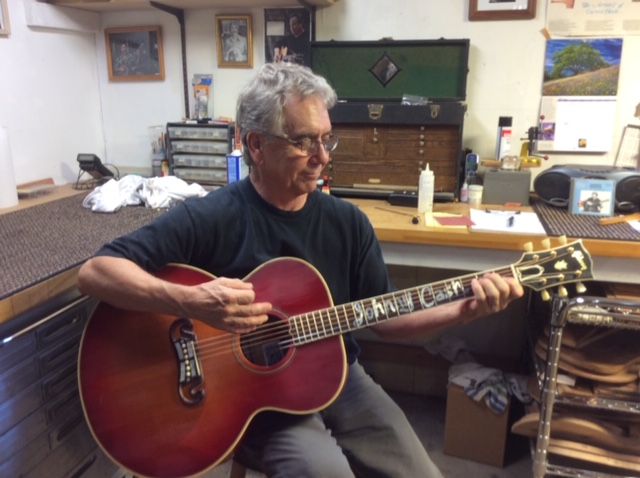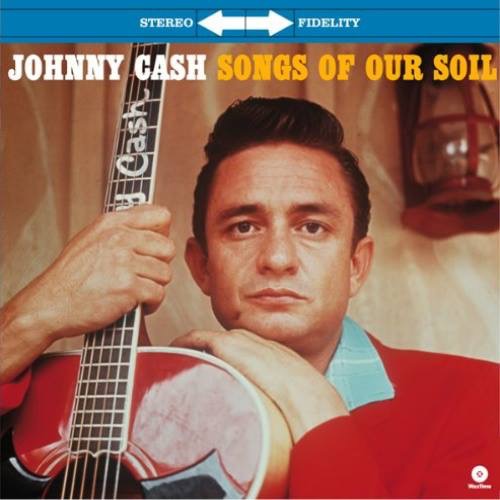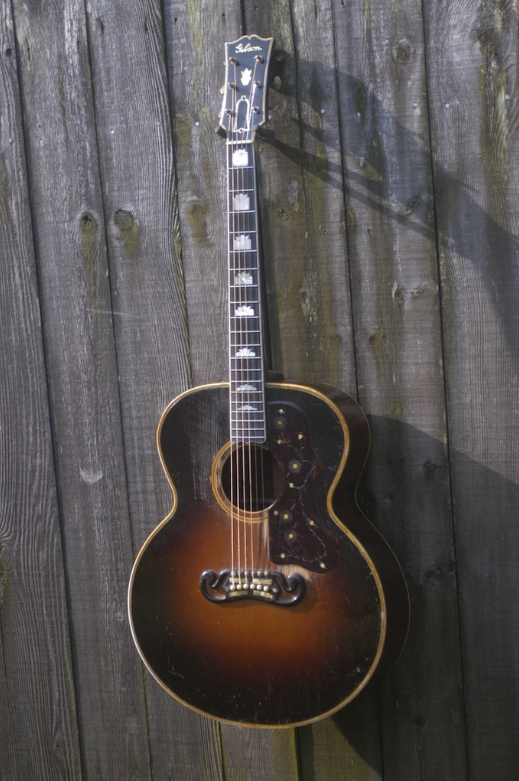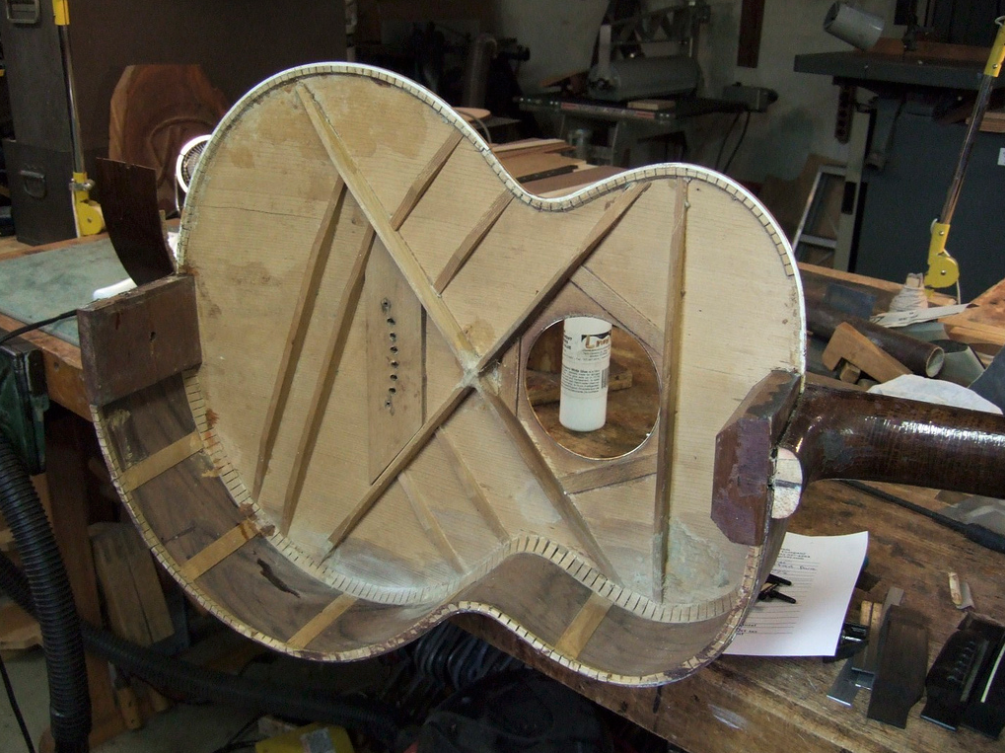For the first installment in an ongoing series exploring iconic guitar models, we spoke with Marty Lanham, owner of Nashville Guitar Company and an instructor at Guitar Craft Academy Nashville, about the iconic Gibson J-200.

Could you talk about the history of the Gibson J-200 acoustic guitar?
There was a lot of stiff competition at the time between the two big guitar-making companies. Gibson and Martin were the two big shots, and they tried to compete with each other.
The “singing cowboy” phenomenon of the 1930s was the main inspiration for Gibson’s J-200. The ’30s were an interesting era — performers wanted to play in auditoriums, but needed guitars that were capable of projecting into the bigger rooms. The Martin D-45 dreadnought Mwas introduced in 1934, and the J-200 was a response to the Martin big-body guitars.
Ray Whitley, who was a cowboy movie idol, approached Gibson in 1937 about having a guitar designed to outdo Gene Autry, a rival Western crooner. Autry had a fancy mother-of-pearl-adorned Martin dreadnaught. The result was the prototype for the Super Jumbo — which was called the SJ-200 due to its original $200 price. Post World War II, it became known as the J-200, and the names are now used interchangeably by most people.
The J-200 model had a lot of inlays and decorations, and was considered to be top of the line. It’s a different shape than a dreadnought, but it’s a big guitar. All the Martin shapes were well defined in those days, and Gibson wanted to come up with something different. Although the J-200 shape is different from the Martin, they both fall into the big-body, flat-top acoustic guitar category. The J-200 is sometimes referred to as “king of the flat tops.”
What aspects of the design do you most admire as a luthier?

It is a graceful shape and very popular. The sunburst finish is very popular. This particular guitar had an Adirondack Spruce top. The original Super Jumbos shared dimensions with Gibson’s L-5 archtop. But unlike the L-5, with its maple back and sides, the original SJ-200 came standard with rosewood back and sides. Interestingly, two pre-war SJ-200s with maple back and sides are known to exist. Rosewood, being a harder and more dense wood, gives the guitar a bit more sustain.
What was the technology like when these guitars were first made? Were they made by hand?
They had machinery, but more of the assembly was done by hand, much more than now.
Are any well-known artists associated with this model?

Johnny Cash played that model in the 1950s. Gibson actually made two J-200s for Johnny Cash with his name on the fingerboard. I restored one of them for Marty Stuart, who had purchased the guitar from a friend in Memphis, whom Johnny had given it to. Marty obtained the guitar when Cash was still alive and showed it to him to get it authenticated.
You rehabilitated another Gibson J-200, a 1940 rosewood model, which is an incredibly rare and valuable guitar. Could you talk about that project?
This was a really interesting case. It has an identical twin with a distinct grain pattern in the back — the other guitar had the very next serial number, and they used the same board to make the back from. The other one came up for sale at Elderly Instruments, a guitar store in Lansing, Michigan. That guitar was in hangtag mint condition. It sold for $124,000. Its twin, the one I worked on, had a much rougher life and had been played a lot.
The other part of the story is how it came to my shop. A luthier here in town passed on — he was a bachelor and didn’t have family. A friend of his who had paid his funeral expenses went to his shop to collect a few things to cover the money he had spent for the funeral. This guitar was in pieces all around the shop. He collected all the pieces and consulted a mutual friend of ours who knew the value.
They brought the guitar to me — it was in pretty bad condition. A piece of the back was missing, the bracing was loose — but the original finish was still intact and all the pieces were there. I replicated the peghead overlay, which had binding around the edge and the “Gibson” name. I replicated it from old photographs and catalogs.

The mustache bridge was unique to Gibson and was one of the aspects they promoted on their premium models. Instead of the saddle – the bone piece that supports the strings – this guitar had individual posts that were threaded, one for each string. I had quite a time replicating those. I found related parts and threaded the piece, and I did tap-and-die work. You can’t really tell them from the original.
Does it make you nervous to tear apart and rebuild a priceless guitar?
There’s a risk any time you restore a valuable piece that belongs to somebody else, because there are things that could go wrong in the process. At the time, it was probably the most extensive restoration I had done at that point. It was gratifying that the guitar sounded so good after I was finished with it.
